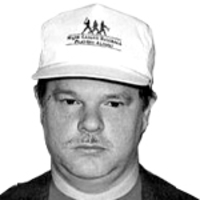Possibly because so many critics are quick to refer to Mario Vargas Llosa as “Our greatest living man of letters,” they are slow to acknowledge that he is also our greatest living novelist. His writing career spans more than five decades (his first novel, The Time of the Hero, was published in 1963). Over that time, Vargas Llosa is the only current writer I can think of—V.S. Naipaul not excepted—who is entirely worthy of the Nobel Prize for either nonfiction or fiction. He has been so prolific and so versatile that it would be difficult to get a handle on his work outside of a college course devoted entirely to him.
The credits page in his latest novel, The Discreet Hero, lists 21 other titles, which for some reason doesn’t include History of a Deicide (1971), his reworking of his dissertation on the novels of Gabriel Garcia Marquez, In Praise of Reading and Fiction, his lecture on winning the Nobel Prize in 2010, and his upcoming notes on The Death of Culture, due out in August.

More impressive than the volume of his work is its range. His memoir A Fish in the Water (1990) deals with his activism, including a failed bid for the Peruvian presidency (Go fish, Norman Mailer). The Perpetual Orgy (1975) is a passionate yet critical book-length study of Flaubert and Madame Bovary. The essays on politics, art, literature and even futbol in Making Waves (1997) and Touchstones (2007) supports Clive James’s contention that he is “the Latin writer who best exemplified the course of the relationship between literature and politics in late twentieth century Latin America.” The Language of Passion collects his sharp and lucid commentary for the Spanish newspaper El Pais, views that have infuriated some leftists, most notably Tariq Ali, for his perceived move to the right. But Vargas Llosa’s political leanings have always been towards liberal democracy, and the modern thinker he has always most admired remains Camus.
As for the novels, everyone knows Aunt Julia and the Scriptwriter (1977) as one of the funniest books ever written. Not so many have read his third novel, Conversation in the Cathedral (published in 1969 when he was 33), a masterpiece of dark and tangled political and sexual themes, or The Dream of the Celt, his fictional biography of Roger Casement, the activist for human rights in Africa and South America who died fighting for Irish freedom. Perhaps no single novel by Vargas Llosa has matched Garcia Marquez’s One Hundred Years of Solitude for imaginative power and cultural impact, but no one has done more to unite the currents of Western post-modernist fiction with Latin magical realism.
Vargas Llosa turned 79 on March 28, but if The Discreet Hero was published under another name it would be praised as the work of a fresh, invigorating new talent. The Discreet Hero has the framework of a crime novel, a technique Vargas Llosa has used numerous times. In alternating chapters The Discreet Hero follows the fortunes of Don Rigoberto (familiar to readers from previous novels), a well-off manager of an insurance company, and Felicito Yanaque, the self-made owner of a trucking firm. Both have found la dulce vida in a city, Lima, which has been lifted by the tide Peruvian prosperity. (There is a whiff of the lurid atmosphere of Raymond Chandler’s post-War L.A. boom town, particularly in the character of a sardonic police detective, Sergeant Lutuma, also a veteran of previous Llosa Vargas novels, most notably Death in the Andes.)
Both Don Rigoberto and Felicito are being extorted by persons unknown, and over 300-plus pages the investigation reveals corruption at all levels of Lima society (The Don is an aristocrat, while Felicito is a “cholo” of mixed Indian blood). The novel’s tone is somber and filled with impending dread, but the author adds his playful touches, providing teasing clues about some of his inspirations: “A certain kind of reading managed to put a stop to that ominous sensation, reading that could absorb him so much he forgot everything else. It happened to him with a novel by Dashiell Hammett, Italo Calvino’s Six Memos for the Next Millennium, [Italian journalist] Claudio Magris’s Danube and … Henry James’s The Turn of the Screw.”
He winks at us when a son says to his father, “All of the books you read are by European writers … And I think most of the CDs, drawings and etchings are, too. By Italians, Englishmen, Frenchmen, Spaniards, Germans, and a couple of North Americans. Is there anything Peruvian you like, Papa?”
There is, and it’s Peru itself. I don’t know how much time Vargas Llosa has spent in Lima over the last two decades, but he has readers feeling as if they were walking down its winding back streets and dimly lit alleys, speaking in jargon, like everyone in The Discreet Hero, “Hey, whaddya’ think?”
Perhaps like Joyce, he had to observe his country’s foibles up close, and reflect on them while abroad. Vargas Llosa has made a career of turning mirrors from the New World and the Old back on each other, then turning both on us.





